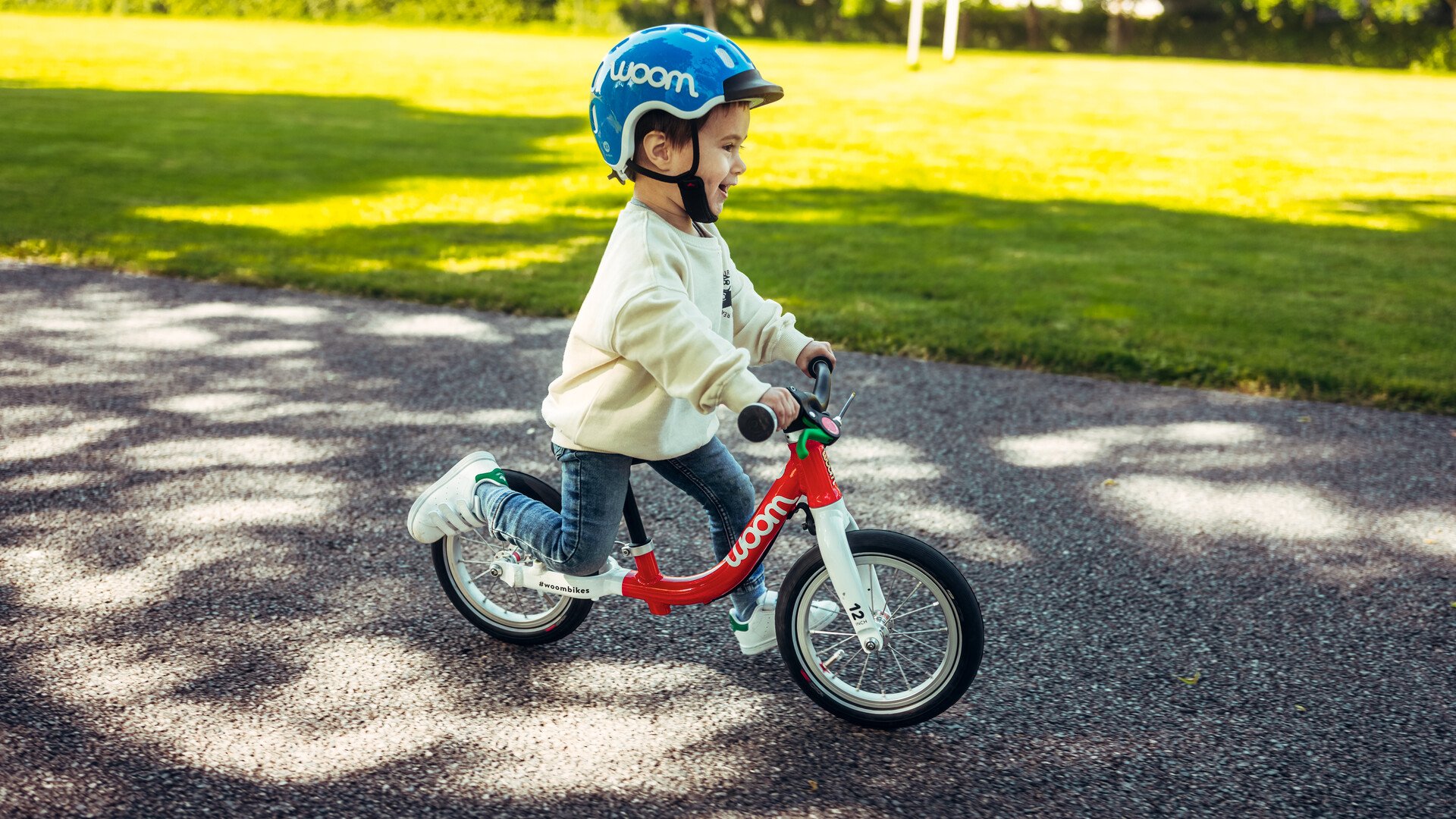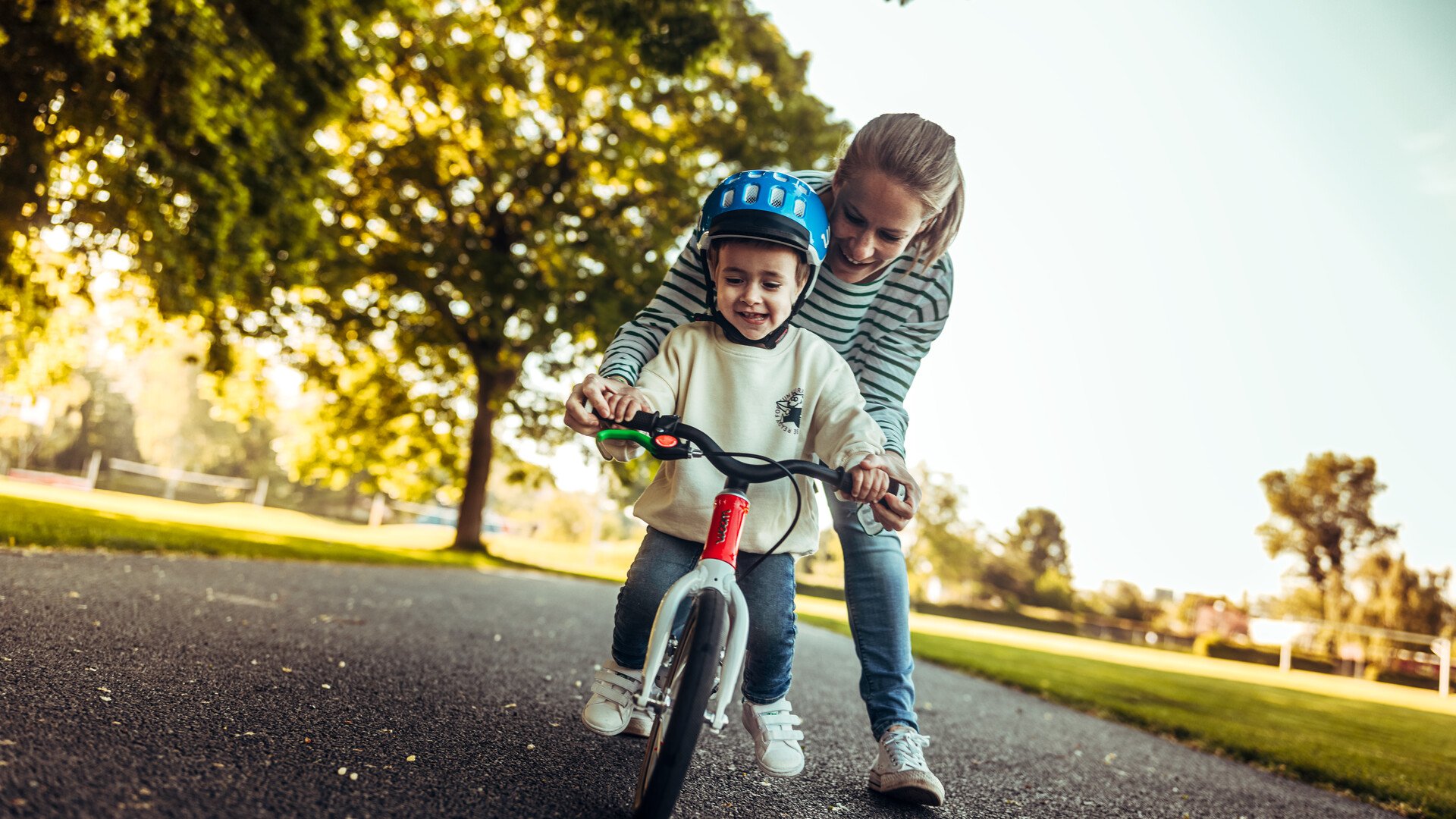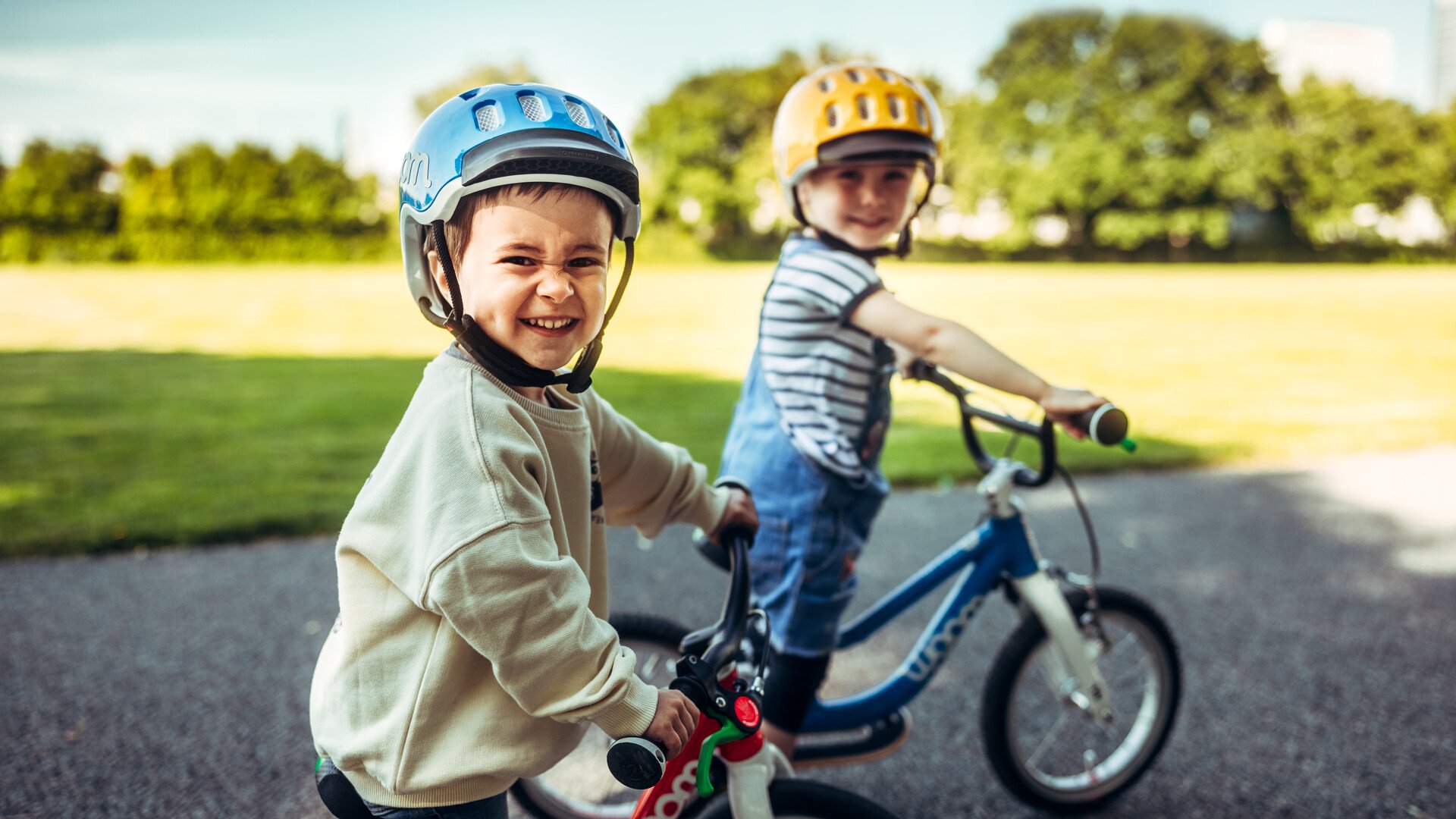Balance bike or training wheels?
How to get your little one ready for a pedal bike!

“I can ride a bike!”
Can you remember being able to say that for the first time? What a special moment! Chances are that your very first attempts at riding a bike involved wobbly training wheels. Things are a little different nowadays, with more and more kids mastering a balance bike before making the move to a pedal bike. Keep reading to find out why balance bikes are the perfect introduction to cycling.
What are the benefits of balance bikes?
What makes balance bikes different to bikes with training wheels is essentially that balance bikes don't have pedals. Instead, children push them along with their feet. And that brings us straight to the reasons for choosing a balance bike over a bike with training wheels:
- Balance bikes are smaller and lighter, meaning that even the littlest kids find them easy and fun to ride. Choosing the right moment to introduce your child to a balance bike is obviously going to depend more on their personal development than on their age. It's important that they are steady when standing on two feet and able to walk.
- It won't take long for your child to master how to ride a balance bike on their own, which will allow them to satisfy their growing urge to move sooner.
- Balance bikes work out all the muscles in your child's body and help them develop their motor skills. They have to coordinate their arms and legs but won't feel overwhelmed because they are already familiar with the steady walking motion.
- Balance bikes get the whole family on the move more. You'll be able to go on longer walks together because your little ones will suddenly have an easy way of covering greater distances.
- There is less risk of falling. If your child's balance bike starts to tilt, they can have their feet safely on the ground in no time. Or they can shift their weight to get back on track before it's too late. These options won't be available if your child is on a bike with training wheels because shifting their weight won't affect the positioning, so the bike quickly loses contact with the ground if it's uneven or bumpy. If your child does happen to fall off their balance bike, the relatively low speed and height mean that they will generally escape largely unscathed.
- Balance: One of the major advantages is that your child learns the basic skills involved in riding a bike from the word go and they have fun along the way. The most important of these skills is maintaining balance. After all, a balance bike will teach your child to automatically balance out every movement by steering slightly in the opposite direction and shifting their weight. As they keep the bike nice and steady, their sense of equilibrium will be boosted.
With training wheels, the exact opposite is true. Every time your child shifts their weight, it will feel wobbly to them. And so they will try to avoid making these crucial balancing movements and will be constantly relying on the training wheels to give them that comforting feeling of safety in addition to the main wheel. Your child will also get used to an unnatural position when turning corners, as they will lean their body outwards instead of inwards to stop themselves from tipping over. Training wheels are therefore counterintuitive when it comes to developing a proper sense of equilibrium and will ultimately make it much harder to progress to a pedal bike. Think about it – if your child gets used to training wheels, they will have to leave behind all the bad habits they have picked up and learn how to maintain their balance from scratch.
Kick-start your child's love of cycling
A word of advice: Don't be disappointed if your child doesn't take to riding their balance bike right away. It's likely that they will just want to explore their new mode of transport to start with, and they may end up just pushing their balance bike around. Give your child the time they need. They will decide for themselves when they are ready to sit on the saddle for the first time.
When that time comes, they will learn to walk on their bike first of all. Now we all know that practice makes perfect... So your child will gradually build up their confidence and their strides will get longer and longer until they make the intuitive transition to running and rolling. The very first laps are likely to be a little wobbly, but it usually won't be long before they are putting their legs in the air and maintaining their balance over huge stretches all the time.
Kids usually also tend to learn the correct steering motion, which involves coordinating their eyes and hands, on their own without any real explanation. Before too long, they are proudly navigating around their first corners.
They will start off using their feet to brake à la Fred Flintstone. But it still makes sense for your child to learn how to come safely to a stop using the hand brake while they are riding a balance bike, as this will get them ready to ride a pedal bike when they are older.
You need to make sure that the hand brake is suitable for little hands and short fingers. If not, it can all get quite frustrating very quickly. This is exactly why our woom 1 has a special brake lever that can be easily reached by tiny hands, making it possible to come to a safe stop with little strength and effort.
Once your child has these initial successful experiences under their belt, they will be whizzing around on their balance bike in a matter of days as though they've been doing it forever. They will then have many years of carefree cycling fun ahead of them.
Make way for your child's first bike!
With a perfected sense of equilibrium, spot-on steering and braking skills, and a healthy dash of self-confidence on their side, your child will probably have no problem upgrading to a pedal bike later down the line. All their practice on their balance bike leaves them free to focus all their attention on the all-important new skill they need to master: pedaling. Before your child hops onto their pedal bike for the first time, we would recommend that you lift it up to show them how cranks set the rear wheel in motion and how the brakes work.
The best place to practice for the first few times is on even terrain with a slight slope, away from any busy roads or obstacles; these conditions will give them the momentum they need to get their feet safely from the ground to the pedals and make it easier for them to balance. Feel free to gently support your child's shoulders or seat to start with. But soon it will be time to muster up the courage and let go! You will be amazed at how quickly your child manages to get their own feet on those pedals and stay balanced – even when the ground isn't perfectly level. After all, your child will have been perfectly primed for this moment thanks to their balance bike!

